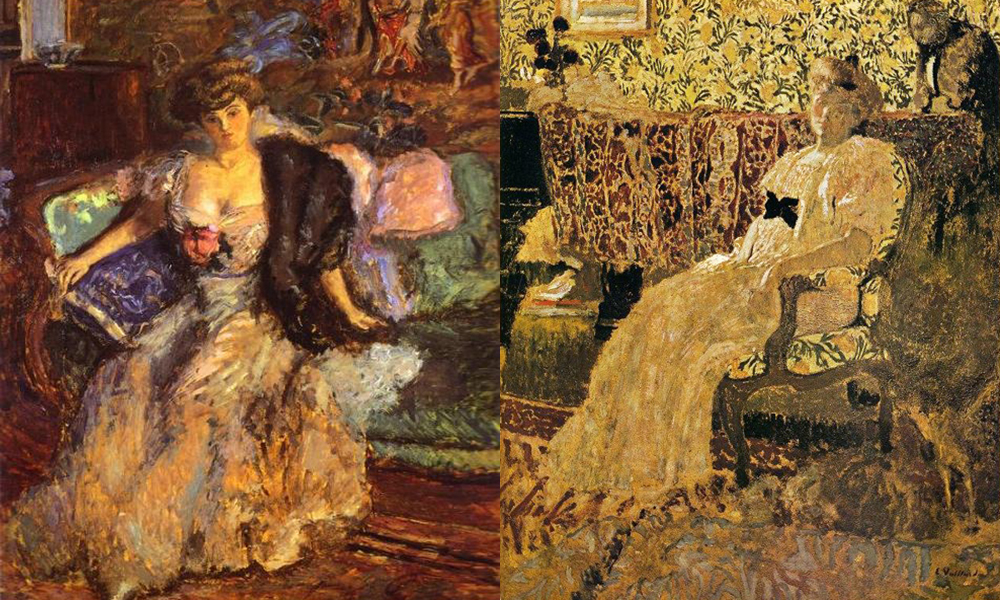Misia Sert: The Woman Behind The Many Artists Of Turn-Of-The-Century Paris
/
Portrait of Misia Sert by unknown photographer; Pierre-Auguste Renoir, 1904
Her taste was original, penetrating and in most cases definitive. Without directly creating anything, she was some kind of artist herself… For most of her life she was too rich to be a true bohemian, and too passionate about art to be a true representative of high society. Instead, she was, for her time, the incarnation of that special energy released when talent and privilege meet.

Misia Natanson en Robe Noire circa 1896-97 by unknown photographer, Archives Vuillard, Paris; Henri Toulouse-Lautrec, 1895
La Revue Blanche was an art and literary publication during the period of aesthetes and decadents at the turn of the century, and its pages featured the most prominent creatives. Misia Sert graced its cover more than once, and Clive James wrote of the key role she played at the magazine:
Being published in the Revue Blanche was like getting into a party: you had to know Misia. But this condition was only mildly pernicious, because you had to be gifted before Misia wanted to know you.

Madame Misian Nathanson by Henri de Toulouse-Lautrec, 1897
Modern and timeless, imperious and vulnerable, vivacious and enigmatic, but more charismatic than beautiful, she was one of the most prolifically painted women of her time.
So writes Tracy McNicoll, introducing Misia Sert for the Misia, Queen of Paris exhibit at the Musée d’Orsay, describing her as the “kingmaker” of the French art world:
Patron of the arts, matchmaker, tastemaker, collector, muse… At a time when Paris was truly the brash, beating heart of the art world, she was a kingmaker, holding court… her magnetic allure moved others to create near her, or for her, or about her, through heady eras—from the Belle Époque 1890s through the 1930s—and across disciplines: art, music, literature, dance, theater, fashion… A gifted pianist, she had a keen ear for avant-garde talent, rescuing masterpieces from anonymity, fiercely boosting her favorites.

Henri de Toulouse-Lautrec, 1897; Henri de Toulouse-Lautrec, 1895
For everyone involved in creative work, taste is of paramount importance. It is escapes definition and measure, yet it is there all the same— as visceral and intangible as any strong emotion. Successful curators and experienced artists know it when they see it; others must simply learn it by osmosis. Misia Sert was not only a trendsetter, she also served as a guardian of cultural heritage, preserving for posterity some masterpieces that may not have been noticed otherwise. Yet, despite being such a central figure in the art scene, she did not become as famous or well-remembered in history as her contemporaries. We all know of Chanel, Renoir, and Debussy, but I personally did hear about Sert until now. Those interested in recording her story only began doing so when most of the people who knew her personally were very old or dead. Clive James wrote about her partially obscured legacy, describing how the art that surrounded her outlived her:
In a way that no artist can ever quite understand but nearly all of them find irresistibly attractive, she did nothing with her capacity for beauty except live. Yet the human personality, which dies with the memory of individuals, and the work of art, which lives on in the collective consciousness, are different forms of the same thing — a truth made acutely visible by Misia’s portraits, which, if they do not capture her, certainly capture uncapturability. She gave the artists the gift of her sublime ephemerality and they made it last. That true sacred monster the Comtesse Anna de Noailles wrote herself an epitaph which would have done much better for Misia: “I shall have been useless but irreplaceable.”
Perhaps Misia Sert herself, as a lover of the arts, would have preferred it this way— her life story transformed into a beautifully illustrated legend. ~ Feanne

Pierre Bonnard, 1908; Jean Édouard Vuillard, 1897

Misa With A Pink Corsage by Pierre Bonnard, 1908; Pierre Bonnard, 1908-9

Paintings of Misia Sert by Pierre-Auguste Renoir

Felix Vallotton; Pierre Bonnard, 1894

Nape Of Misia’s Neck by Jean Édouard Vuillard, 1897
You can find more images of Misia Sert, as well as information about these images, at the following webpages:
Models & Muses, Misia Godebska Sert & Pierre Bonnard (1867-1947)
Models & Muses. Misia Godebska Natanson Sert (1872-1950)
Jean Édouard Vuillard 1868-1940 adored model & muse Misia Godebska Sert Natanson
